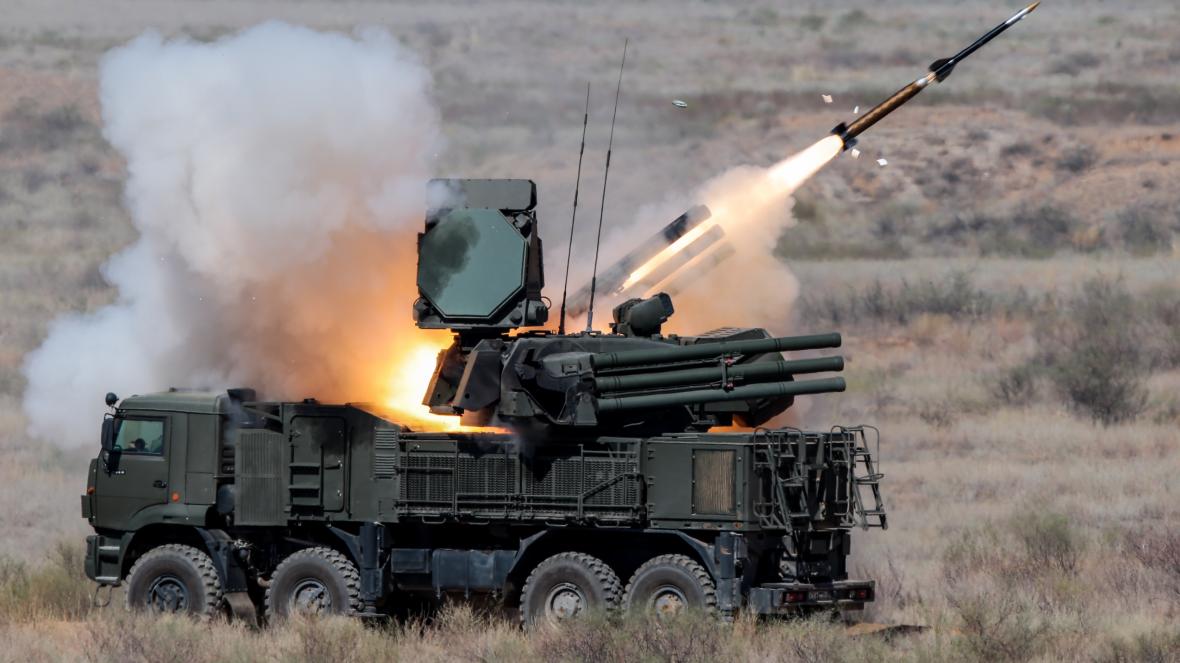
The US secretly flew a Russian-made Pantsir missile launching system to Germany.
A captured Pantsir S1 paraded in Tripoli by government forces, May 2020. This may be the system the U.S. Air Force flew out a month later but it is likely impossible to know for sure.
A truck-mounted Russian air defence missile system captured on a Libyan battlefield was flown intact to a US air base in Germany in a covert mission.
The operation was ordered amid concerns that the Pantsir S-1 missile battery, which can easily bring down civilian aircraft, could fall into the hands of militias or arms smugglers in the war-torn north African country.
The acquisition of a Pantsir, designed to defend against U.S. and NATO aircraft, is a windfall to the U.S. intelligence community.
A Pantsir-S1 short range air defense system abandoned by its operators in Libya was covertly transported to Rammstein Air Force Base in Germany by the United States.
According to The Times, the secretive mission was carried out in June 2020, due to concerns that the Pantsir-S1, provided for the Libyan National Army by the United Arab Emirates, could fall into the hands of militias or arms smugglers, following its abandonment by LNA militias during the fall of al-Watiya Airbase. The mission was carried out in June, after the Pantsir had been seized by Mohamed Bahroun, a notorious militia commander also known as ‘the Rat’, following its transportation to the town of Zawiya.
However, forces loyal to interior minister Fathi Bashagha forced Bahroun’s militia to hand over the Pantsir, and then transported it to a base hosting Turkish forces. It was then delivered to Zuwara airport, where a US team had arrived aboard a C-17 Globemaster III. With the precious cargo secured, the C-17 then departed for Rammstein, where the trail went cold.
Furthermore, US technical analysis could help develop a response to newer Pantsir variants like the S1M or SM. While KBP Tula, manufacturer of the Pantsir, claims that the newer models are significantly more effective due to incorporating lessons learned from similar poor showings in Syria, they ultimately reuse the base Pantsir system design, and possibly retain the same exploitable weaknesses.
The Pantsir S-1 is one of Russia’s first post-Cold War, low-level air-defense systems. The system consists of 12 57E6 short-range, radar- and electro-optically-guided surface-to-air missiles with a maximum range of 11 miles. The weapons load is rounded out with a pair of 30-millimeter, radar-directed autocannons. The entire system sits on the bed of a 8×8 truck chassis.
While Pantsir has been widely exported, Russian military forces still use it, making it a system U.S. and NATO forces could face in wartime. U.S. forces have reportedly gained access to Pantsirs in UAE military service during joint exercises, but the Libyan system is the first one the U.S. military and intelligence community get to keep.
The weapon may likely end up at Wright Patterson Air Force Base, the home of the U.S. Air Force’s National Air and Space Intelligence Center, which maintains a Foreign Material Exploitation center for the express purpose of studying captured, stolen, or otherwise-acquired foreign weapon systems.
The system will likely be dismantled and rebuilt, and the knowledge of how Pantsir engages enemy aircraft will help protect U.S. and allied airplanes in the future.
The Pantsir is meant to provide air defense to headquarters, supply units, air bases, and other important sites from threats including low-level fixed wing aircraft, helicopters, drones, and even cruise missiles.
The timing of The Times’ scoop is also rather interesting, coming on the same day as the announcement that the Biden administration would be reviewing the sale of F-35s to the UAE. Some opponents of the deal had pointed to the UAE support of the LNA as a reason for opposing the deal, with none other than the Defense Intelligence Agency stating in a report that the UAE “may” have been funding Wagner’s operations in Libya.